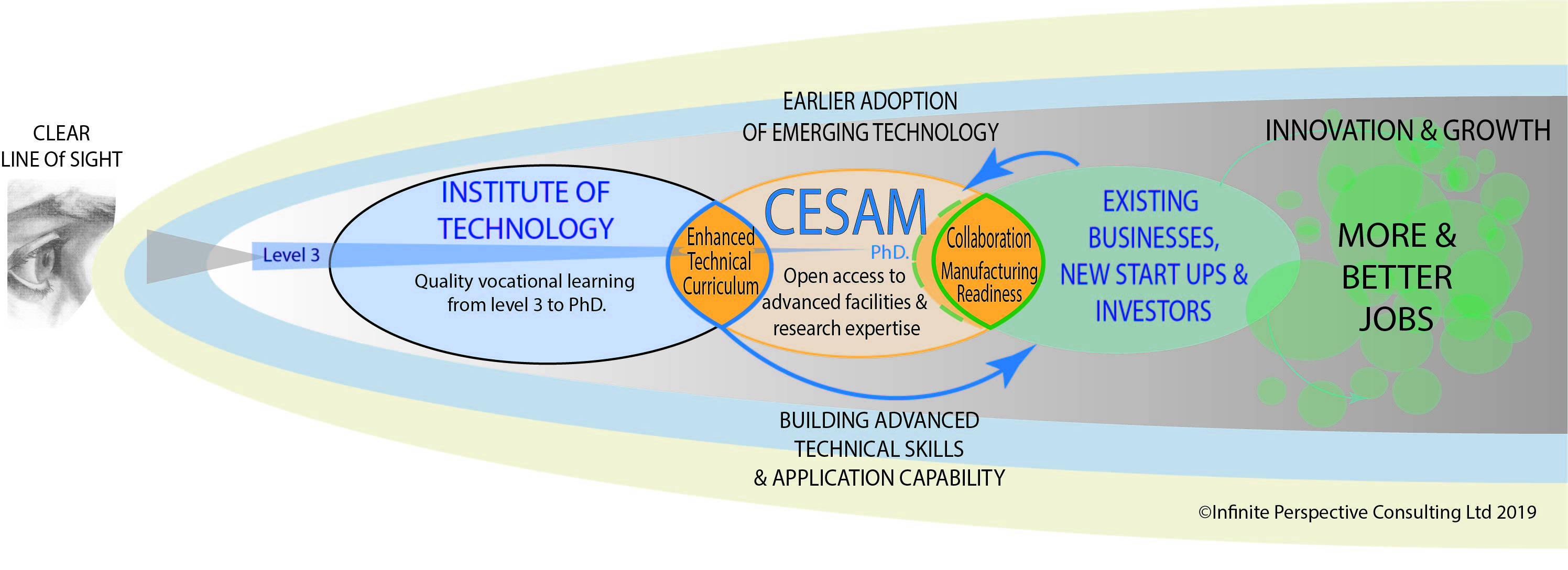Why the success of Institutes of Technology is key to filling the technical skills GAP

The Challenge
The UK’s Industrial strategy requires a workforce with strong levels of educational attainment. However, currently, of those students that do not progress to a graduate qualification, only a small proportion progress beyond a level 3 qualification. These advanced levels of skills are already in short supply in technical subjects and are increasingly valued in the workplace.
Background
Access to higher value technical employment opportunities requires a solid base educational attainment. However, five years after GCSEs, a quarter of students in the England have failed to attain a level 2 qualification and of the 11% that progressed to level 2, but no further, one-in-five do not have English and Maths. A third of students progress to a level 3 qualification (A Levels/BTEC), yet only 1% continue to complete their education to a more advanced level 4 (Advanced Apprenticeship, ONC) or level 5 (Foundation degree, HND). Overall, only seven per cent of people aged between 18 and 65 are undertaking training at Level 4 or 5 – one of the lowest rates in the OECD. Engineering and & Manufacturing vocational skills at this level are in short supply and are increasingly sought in advanced engineering and manufacturing organisations, and employees attract a significant wage premium over those with level 3 qualifications.
Our own work with the North East Auto Alliance illustrates the issues well. Engineering & Manufacturing Technology (E&MT) apprentice starts were 15% of the total starts in the region in 2017/18, circa 1640 students, down 25% from 2015/16. Only 1% of the total were studying E & MT at level 4, representing only 110 students. The automotive cluster alone is facing a shortfall of over 400 E & MT technicians over the next 5 years and this shortage reflects the wider experience across the UK.
Our insights
In April 2019 Government announced twelve Institutes of Technology (IoT) specialising in delivering ‘quality higher level technical training (at Level 4 and 5) in STEM subjects, such as digital, advanced manufacturing and engineering that will provide employers with the skilled workforce they need.’, and have recently announced a further 8 will be established. We identify three critical insights that inform our thinking.
- Research and Innovation organisations (RIOs) can provide best practice learning for advanced apprentice schemes. They provide curricula beyond level 3, typically with circa 30%+ more advanced technical content. Many develop new curricula based on access to emerging advanced research, the latest equipment and specialist personnel. The educational offer is underpinned by the quality assurance from a university and/or an employer and provides confidence to students and key influencers in the route for vocation educational progression.
- The further education sector is fragmented, with many colleges competing across multiple priorities for scarce resources. IoTs provide a focused partnership between employers, HE and FE providers to enable the required ongoing capital investment in engineering and manufacturing technologies that keeps pace with new technologies and emerging skill requirements. They also provide a means to attract and retain the specialist teaching staff required to teach at advanced technical levels to robustly underpin an ability to offer a credible vocational alternative to an academic pathway.
- Students are attracted by the clear view of seamless technical pathway, that leads to high value employment opportunities. Employers are attracted by the availability of a critical mass of employable skills and also benefit from the improved awareness and capability that allows the early adoption of emerging processes and technology.

Institutes of Technology can make a significant contribution to support the skills requirements of the local industrial strategy. Strong partnerships between employers and further and high education can ensure a supply of capable technical skills. Collaboration with the research and innovation organisations further enables innovation and growth in local economies and facilitates the early adoption of emerging technologies and advanced manufacturing processes. Figure 1 illustrates how a regional strategic workforce approach is leveraged to educate, attract, sustain and grow high value engineering and manufacturing businesses as part of a strategic economic plan.
